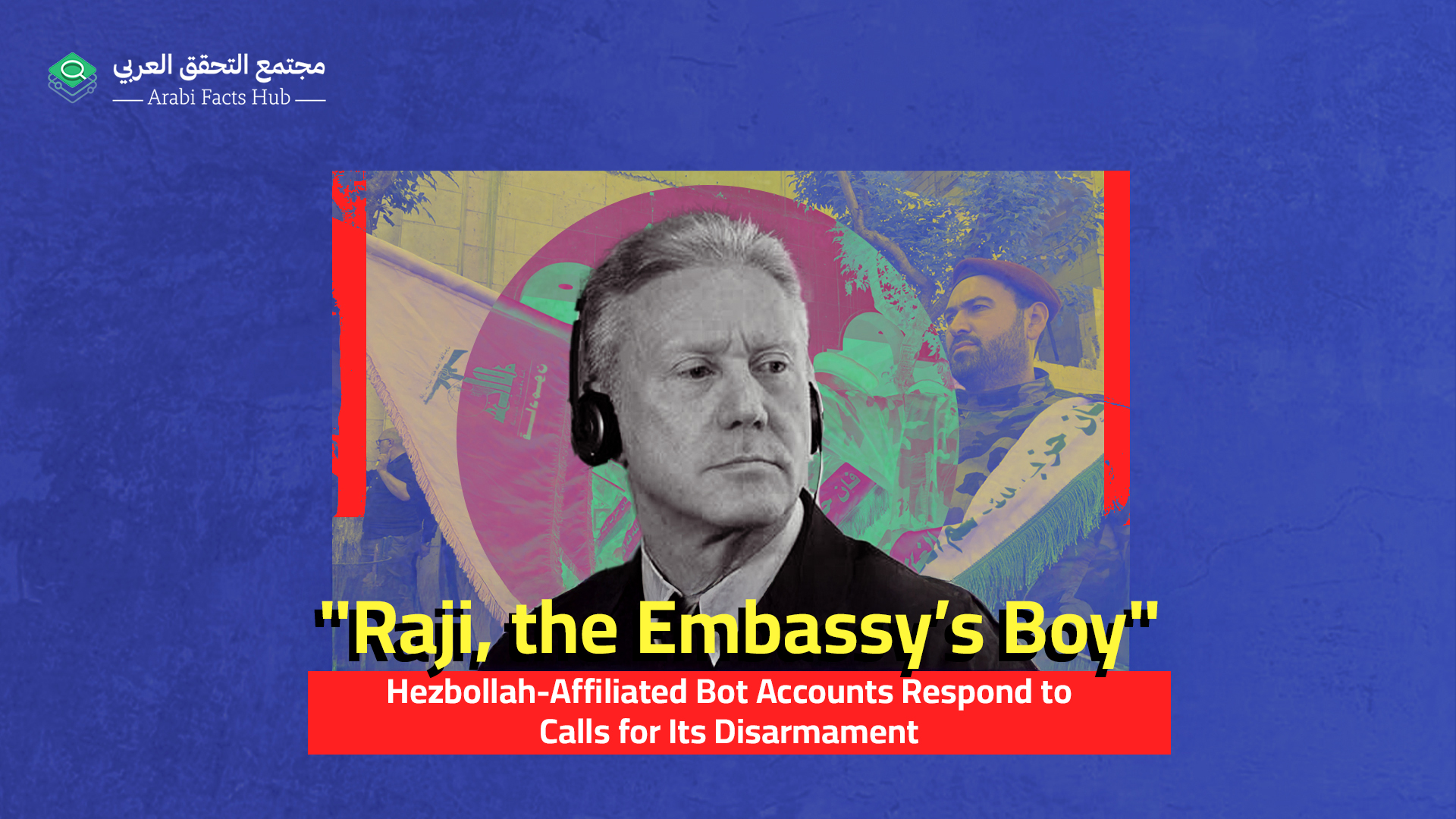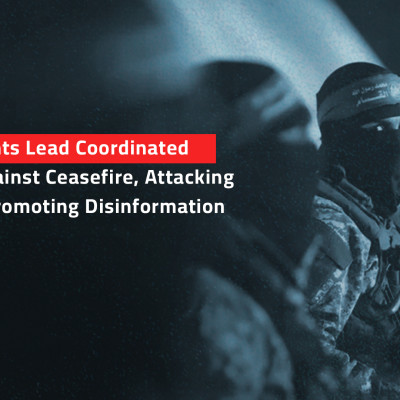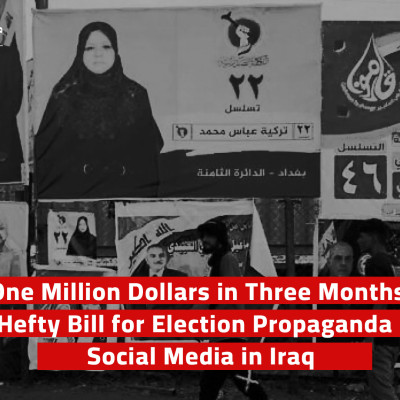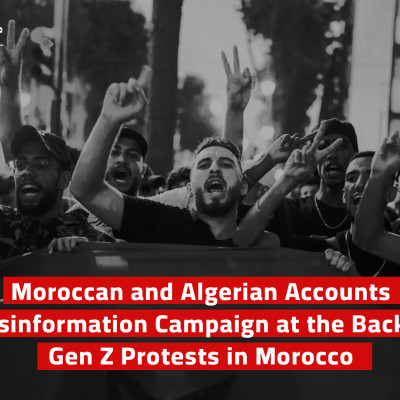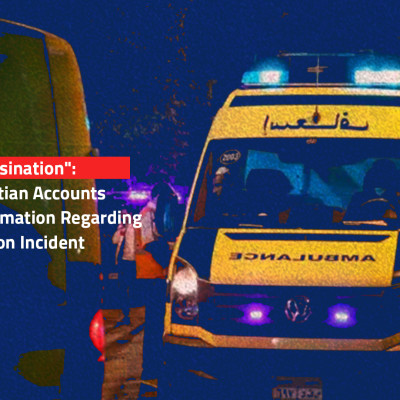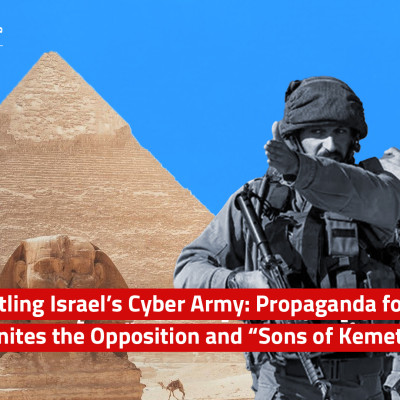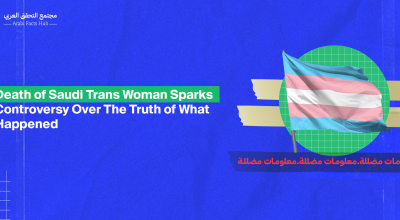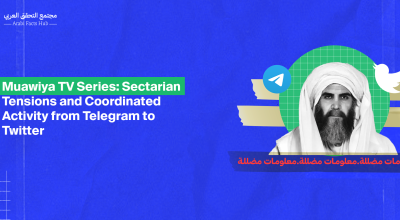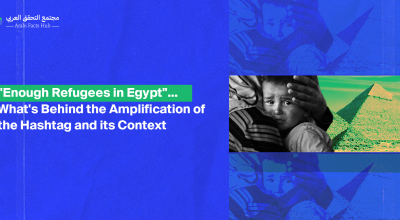Lebanese Foreign Minister Youssef Raji made a series of statements in an interview with Al Quds Al Arabi on May 28. Most notably, he declared that the Lebanese people no longer support the so-called “wooden trinity,” in response to Hezbollah Deputy Secretary-General Naim Qassem, who reiterated the group’s commitment to Lebanon’s “Army, People, and Resistance” doctrine.
Not only that, but the Foreign Minister launched a fierce attack on Hezbollah’s weapons, describing the group as an armed organization operating outside the bounds of the Lebanese state.
Following Raji’s remarks, the hashtag "#رجي_صبي_السفارة" (Raji, Embassy’s Boy) emerged, generating over 1,500 posts and more than 10,000 interactions.
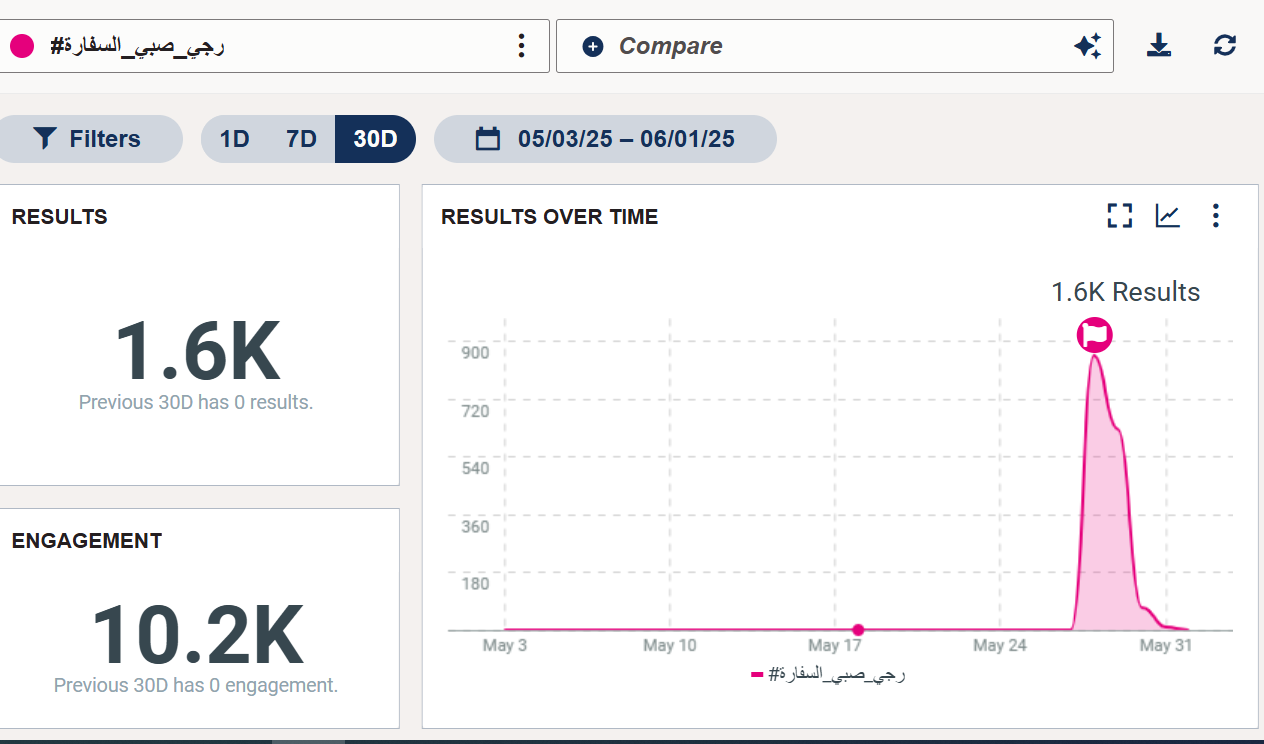
According to Meltwater data, original content made up only 7% of the campaign’s overall volume. In contrast, reposts and comments accounted for the bulk of the activity, at approximately 46% and 42% respectively—suggesting a campaign strategy centered on artificially amplifying engagement with the original posts.
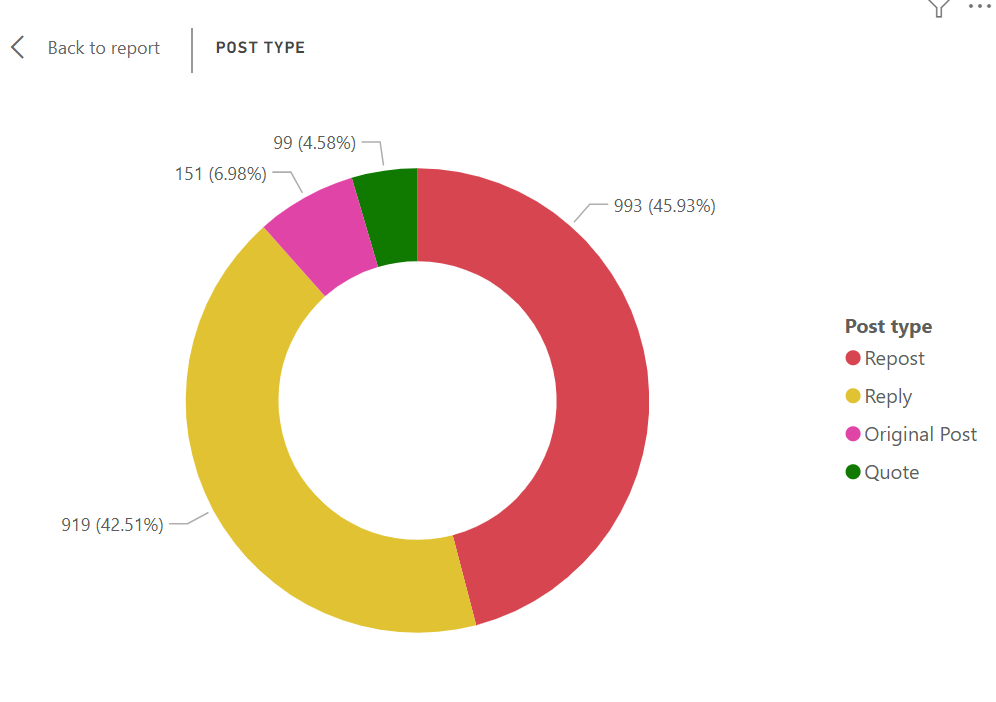
The hashtag "#رجي_صبي_السفارة" (Raji, Embassy’s Boy) was frequently associated with accusations of treason and allegiance to the U.S. Embassy in Awkar. The prevailing claims questioned Raji's legitimacy as a representative of Lebanon, underscoring the accusatory and politically charged nature of the hashtag.
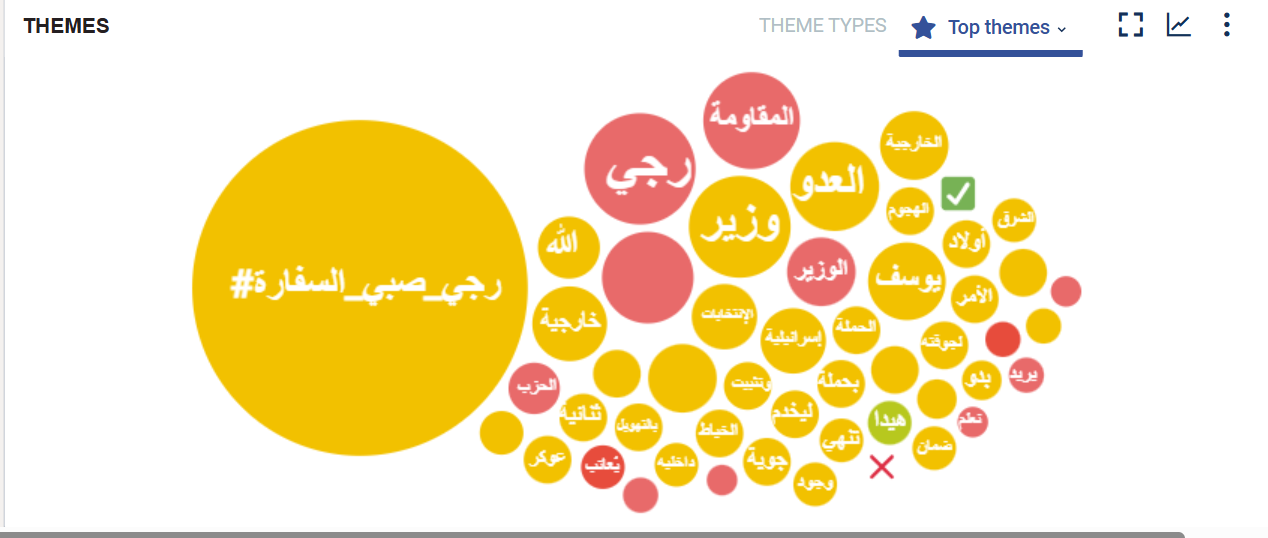
Analysis of the hashtag reveals a lack of organic, non-partisan public engagement. The most prominent activity came from influencers and social media activists aligned with Hezbollah. Some, like Layla Samaha, posted videos responding to the minister’s remarks, while Qassem Shaheen shared a widely circulated image of Foreign Minister Raji labeled “Foreign Minister of Maarab” (a reference to the Lebanese Forces stronghold). This post was reused extensively by both real and automated accounts.
In contrast, supporters of the Lebanese Forces or those who agreed with Raji’s statement generally stuck to sharing his comments using the hashtag #يوسف_رجي (Youssef Raji).
As for the geographic location of the hashtag, most posts originated in Lebanon, followed by Saudi Arabia and Yemen.
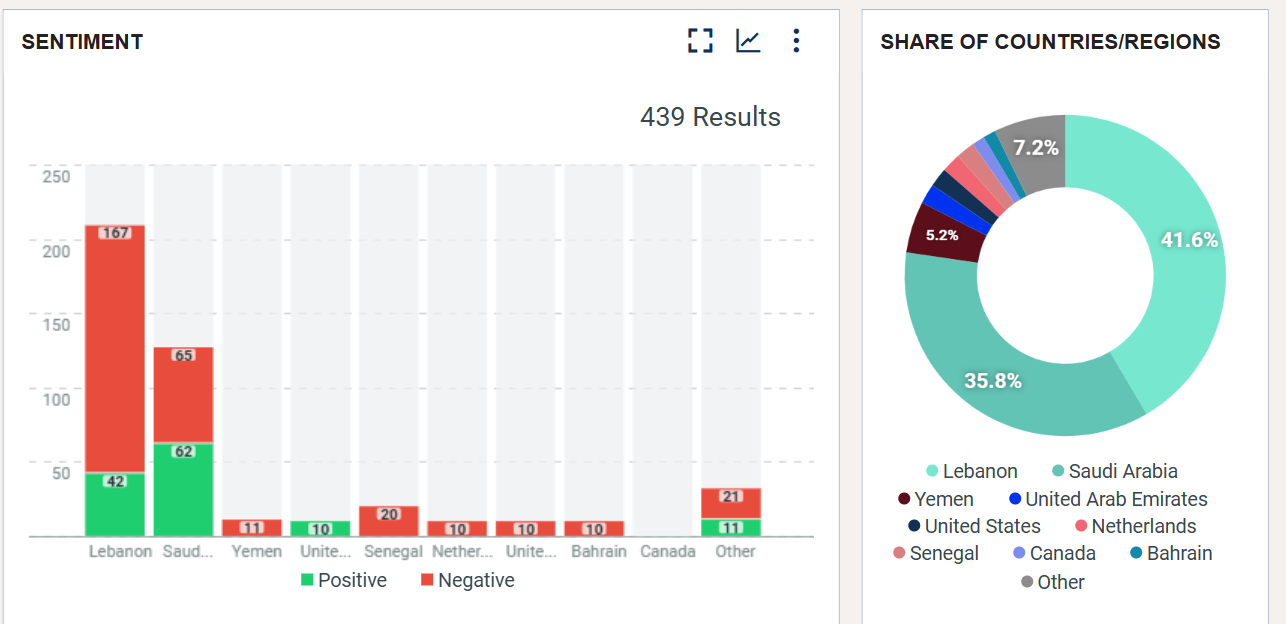
An analysis of several accounts tweeting from Saudi Arabia and Yemen reveals that they are largely automated (bot) accounts. These profiles either use AI-generated images, photos of Hezbollah leaders, or no profile pictures at all. Their usernames are often vague or nonsensical, further suggesting inauthentic activity.
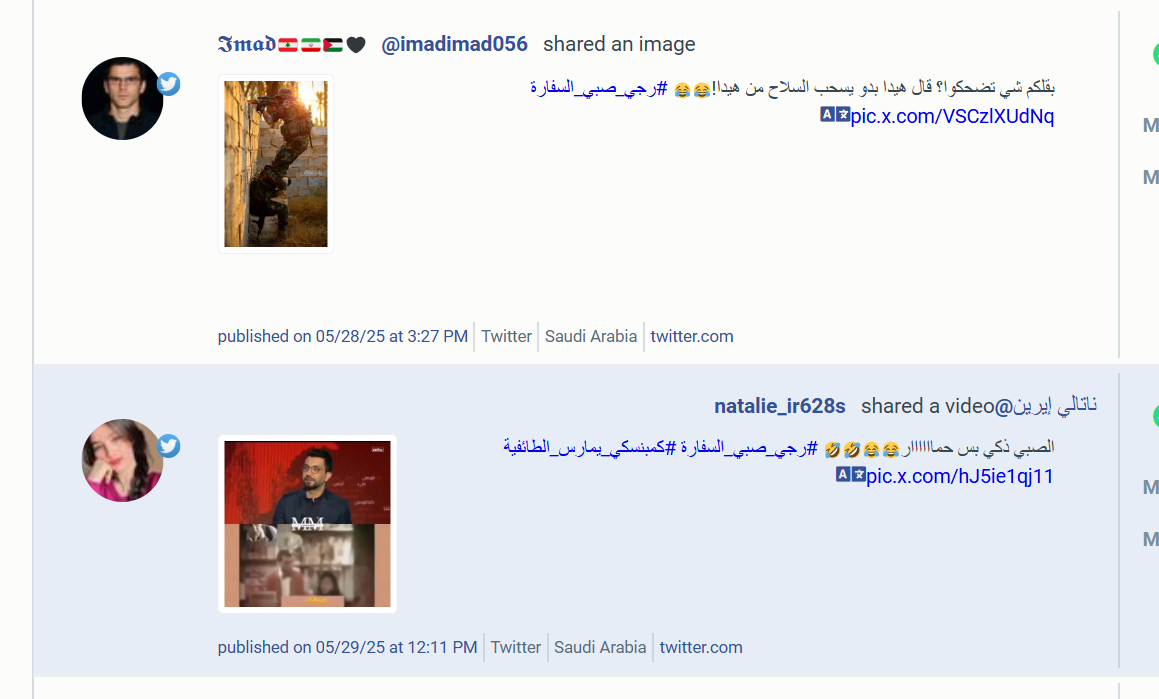
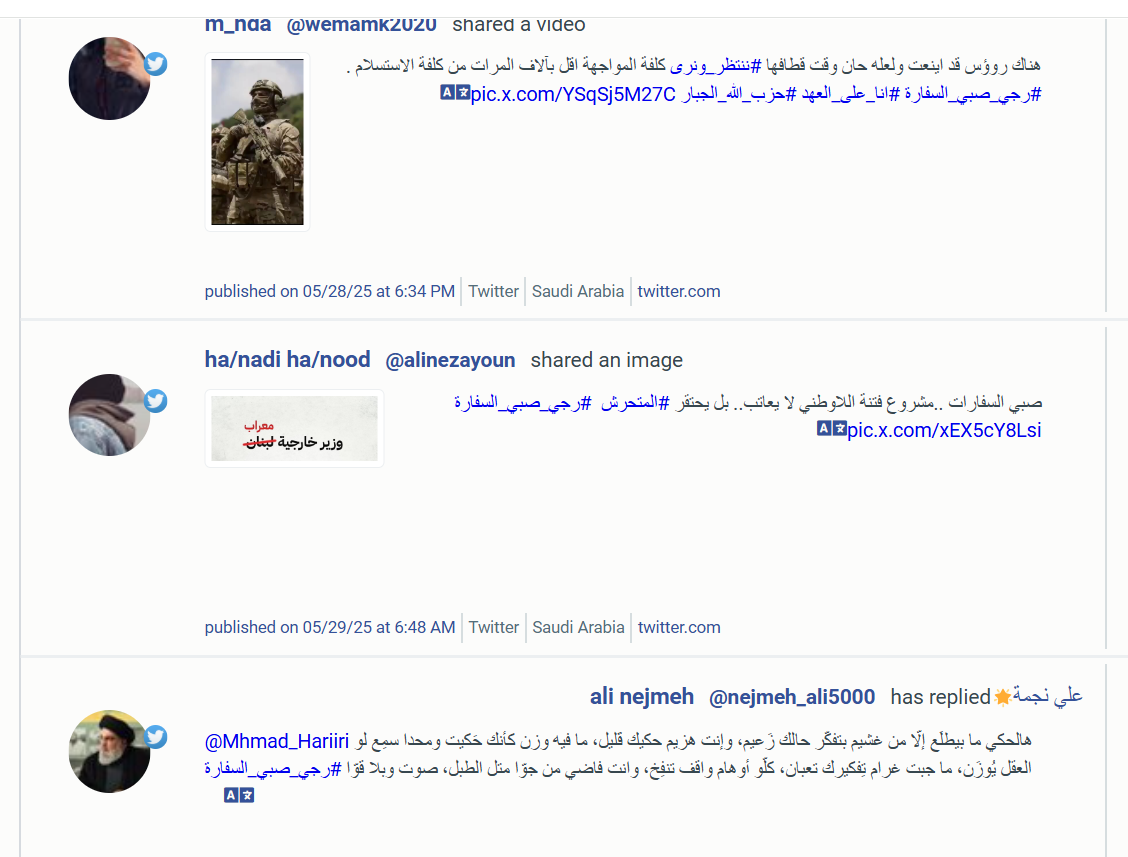
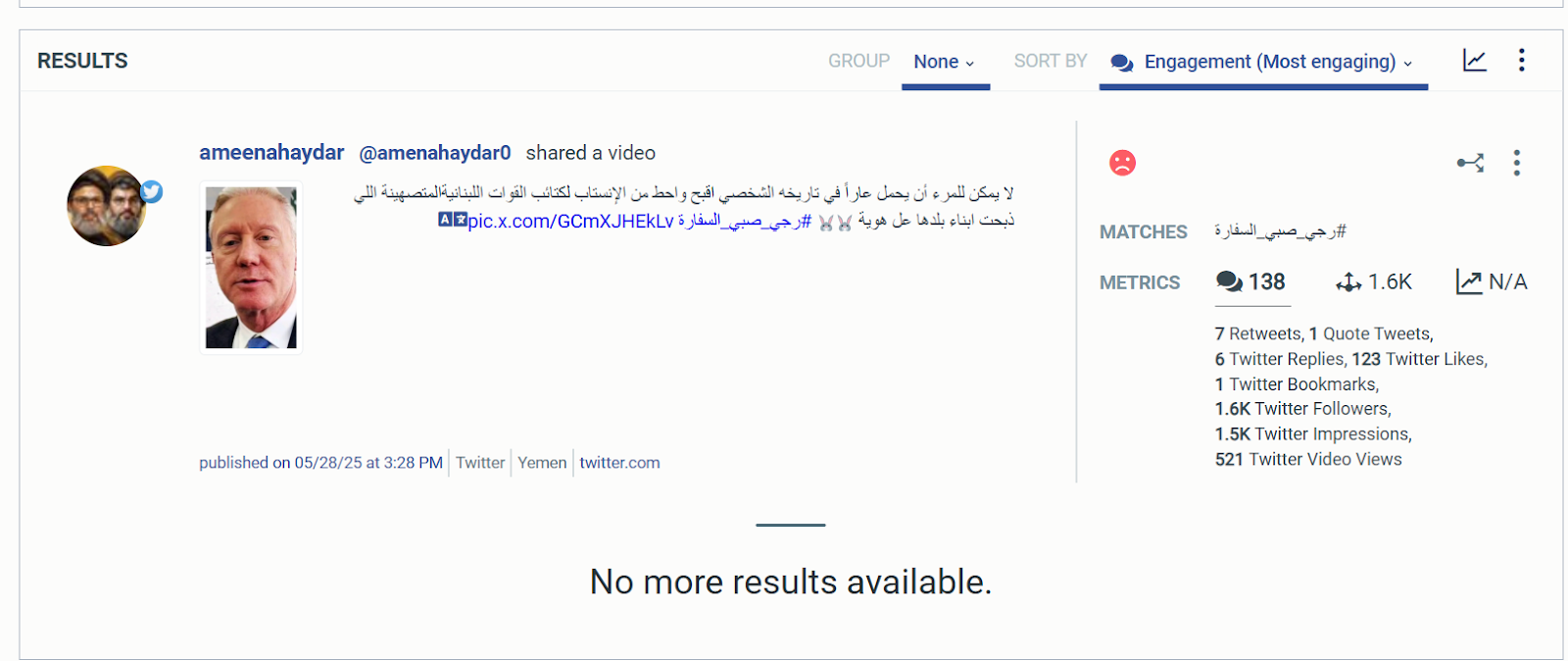
Who Is Behind this Campaign?
Just a few hours after Minister Raji’s interview was published, the account @mayj10600897 began posting under the hashtag "#رجي_صبي_السفارة" (Raji, Embassy’s Boy). The account appears to be automated: it has only one image, posts exclusively in support of Hezbollah, and frequently attacks its critics. Despite its suspicious nature, the post gained significant traction, reaching over 3,000 users.
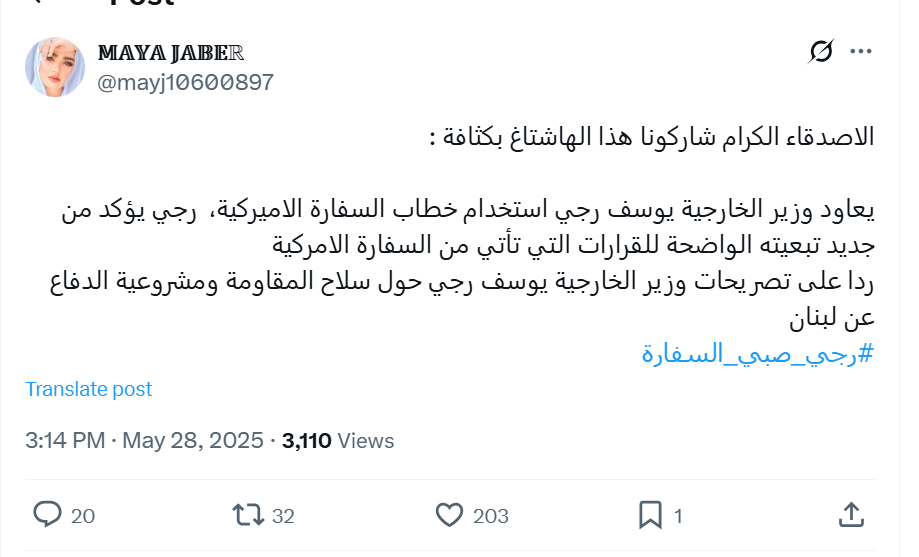
Following that post, more began to appear, but the day with the highest engagement with the hashtag was May 29, 2025, the day following the minister’s statement. This spike in activity coincided with public reactions from several Hezbollah MPs, including Hassan Fadlallah and Ibrahim Moussawi, who criticized the foreign minister in statements that were also shared under the same hashtag.
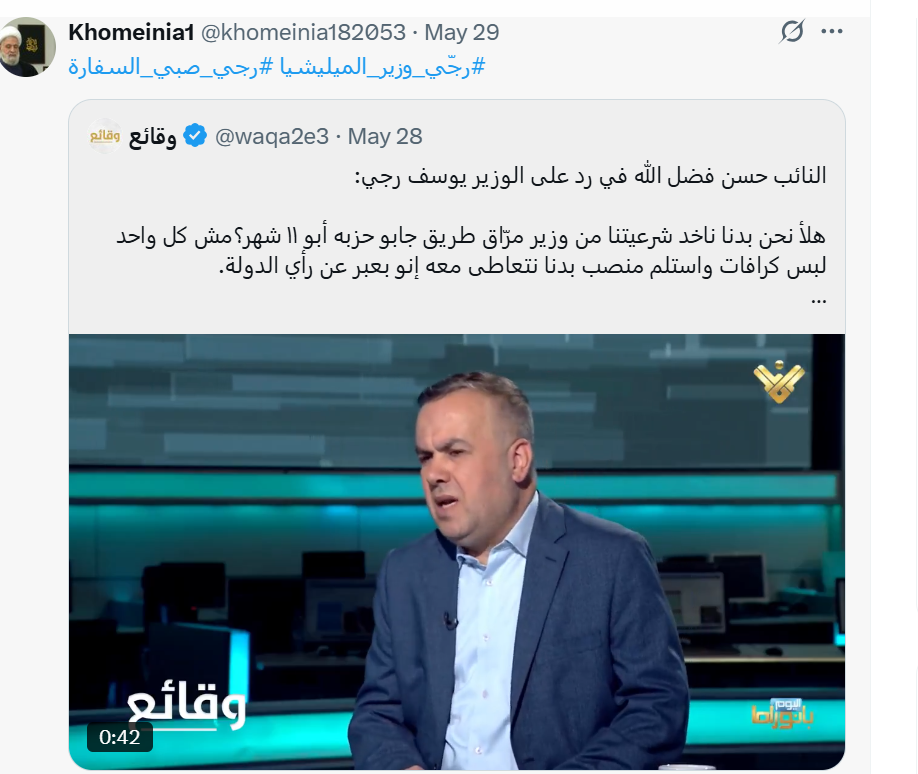
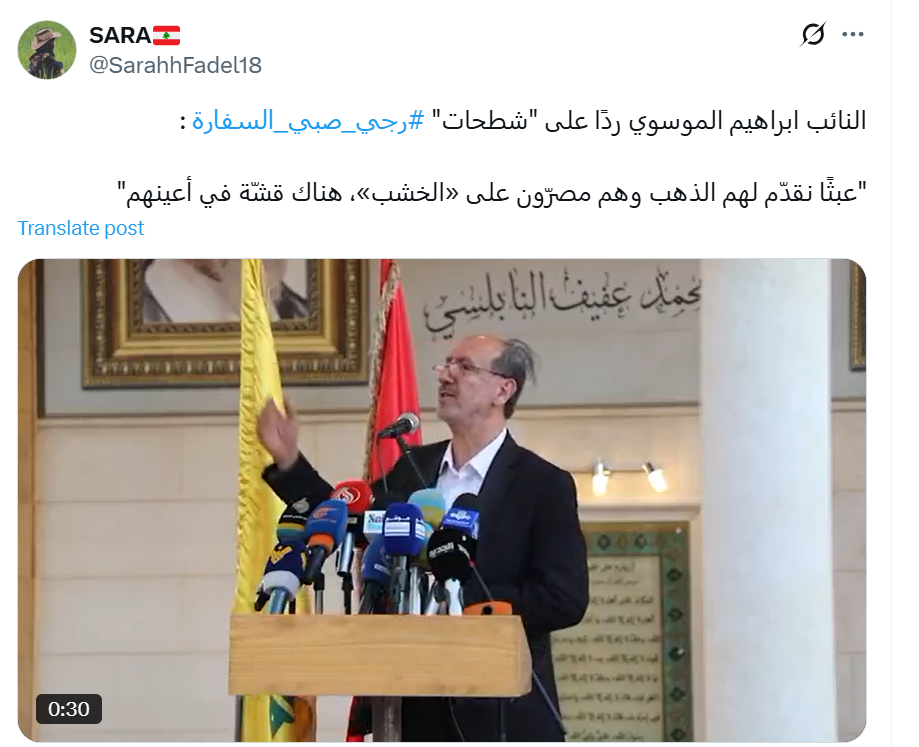
Most of the posts were aggressively critical of the foreign minister, focusing on accusations that he represents “the Foreign Minister of the Lebanese Forces,” rather than Lebanon itself, and that he takes his orders from the U.S. Embassy in Awkar. Conspiracy theories were also widely promoted, including one by journalist Mohamad Kazan, who claimed there is a “maestro” in Awkar—referring to the U.S. Embassy—directing both Prime Minister Nawaf Salam and the foreign minister. Kazan also linked this alleged conspiracy to the TV channel Al Jadeed, which had recently criticized Hezbollah, suggesting a coordinated plot involving all these parties.
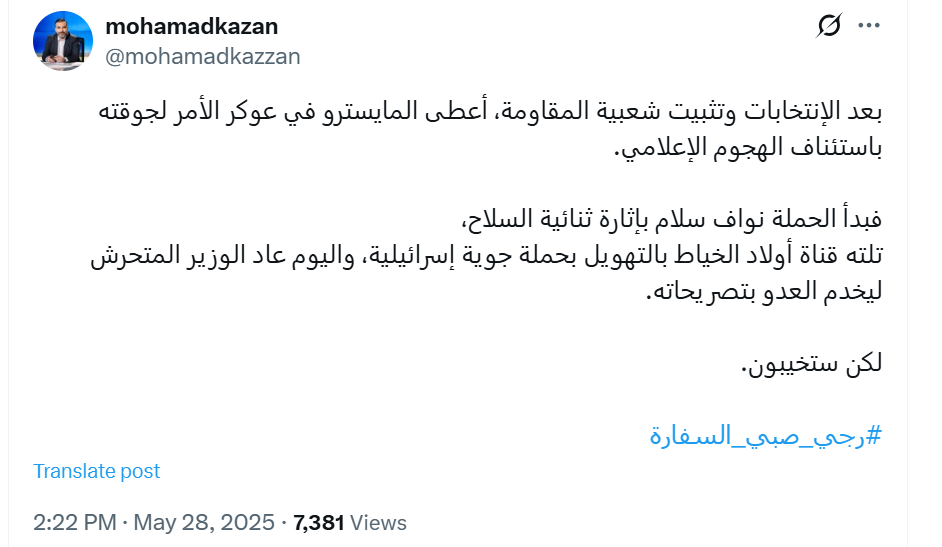
Accounts that Engaged with the Hashtag and their Backgrounds
According to our analysis of the most active accounts engaging with the hashtag, they fall into two main categories: real accounts belonging to individuals who support Hezbollah, and automated (bot) accounts.
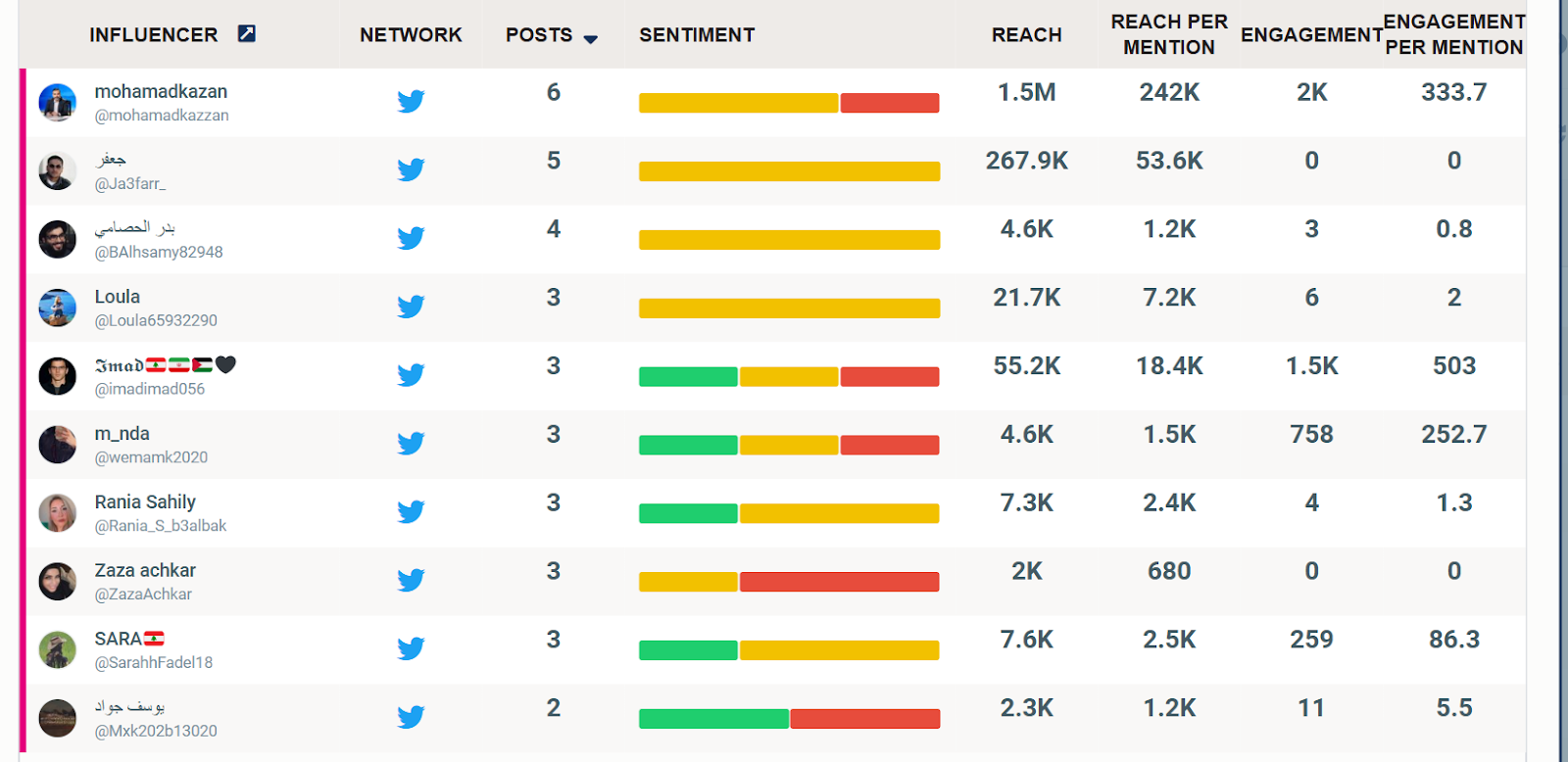
Among the most prominent real accounts was that of Mohammad Kazan, a journalist with Al Manar TV, who was the most active on the hashtag, posting on it at least six times.
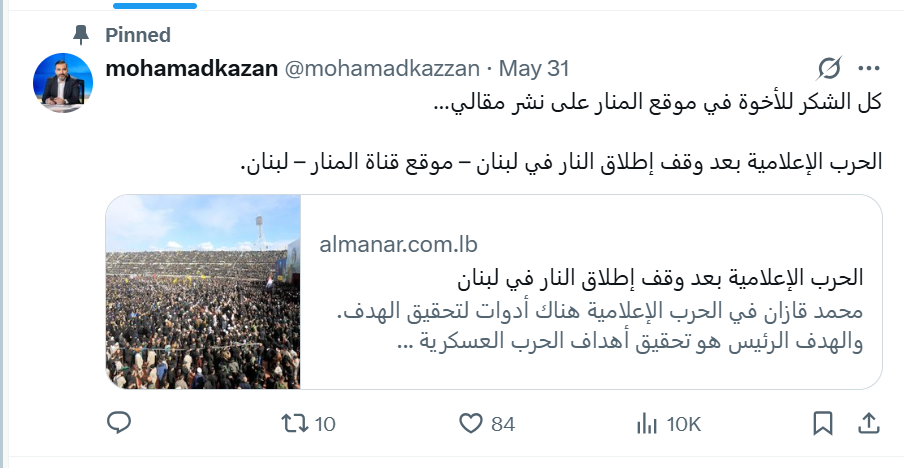
Journalist Hawraa Yassin also engaged with the hashtag, posting comments with a sharp tone and clear support for Hezbollah—consistent with her previously stated positions.
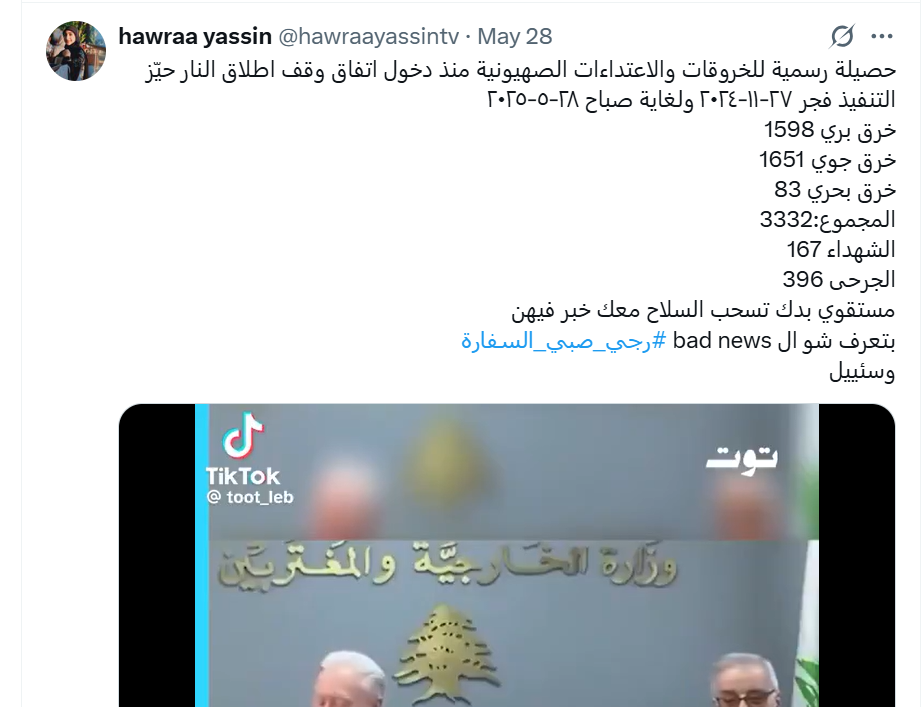
Imam of the Al Mujtaba Mosque complex, Sheikh Khalil Rizk, also joined the hashtag campaign, accusing the Foreign Minister and describing him as the “Foreign Minister of Israel.” Sheikh Rizk, who is followed by thousands, is known for his sharp rhetoric and has previously accused anyone opposing Hezbollah of treason and collaboration. For example, in 2021, he tweeted that Samy Gemayel, Fares Souaid, Nadim Gemayel, and Samir Geagea were “agents of Israel.” He also previously described the Syrian revolution as a “Zionist uprising.”
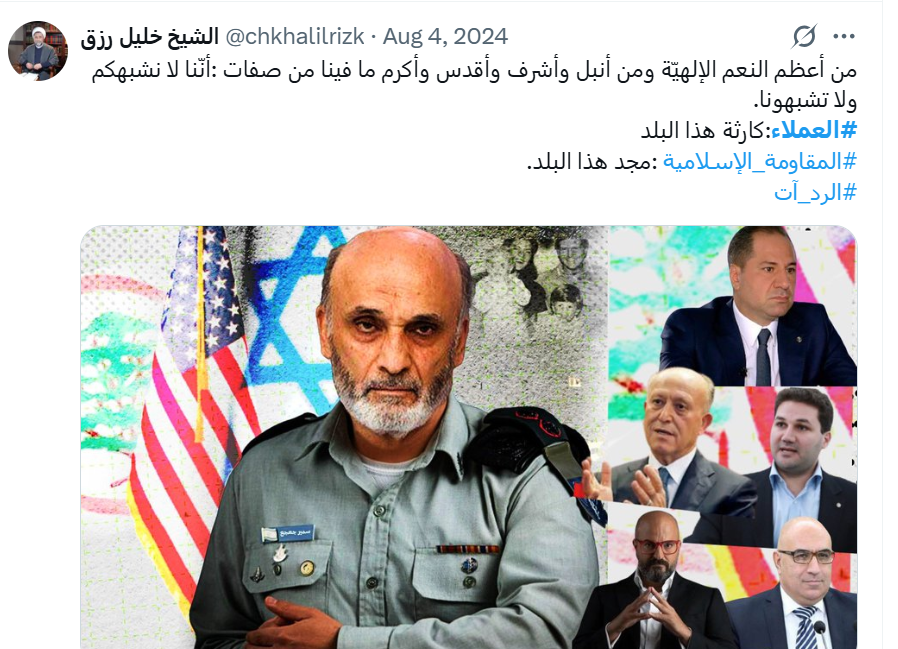
Several bot accounts also participated in the hashtag #رجي_صبي_السفارة (Raji, Embassy’s Boy”), including the account [@imadimad056], which has around 18,000 followers. It was one of the most active fake accounts on this hashtag, generating approximately 1,500 interactions.
This account scored 2.3 out of 5 on the automation scale, indicating it is semi-automated.
Supporting this assessment is the fact that its profile picture appears to be AI-generated.
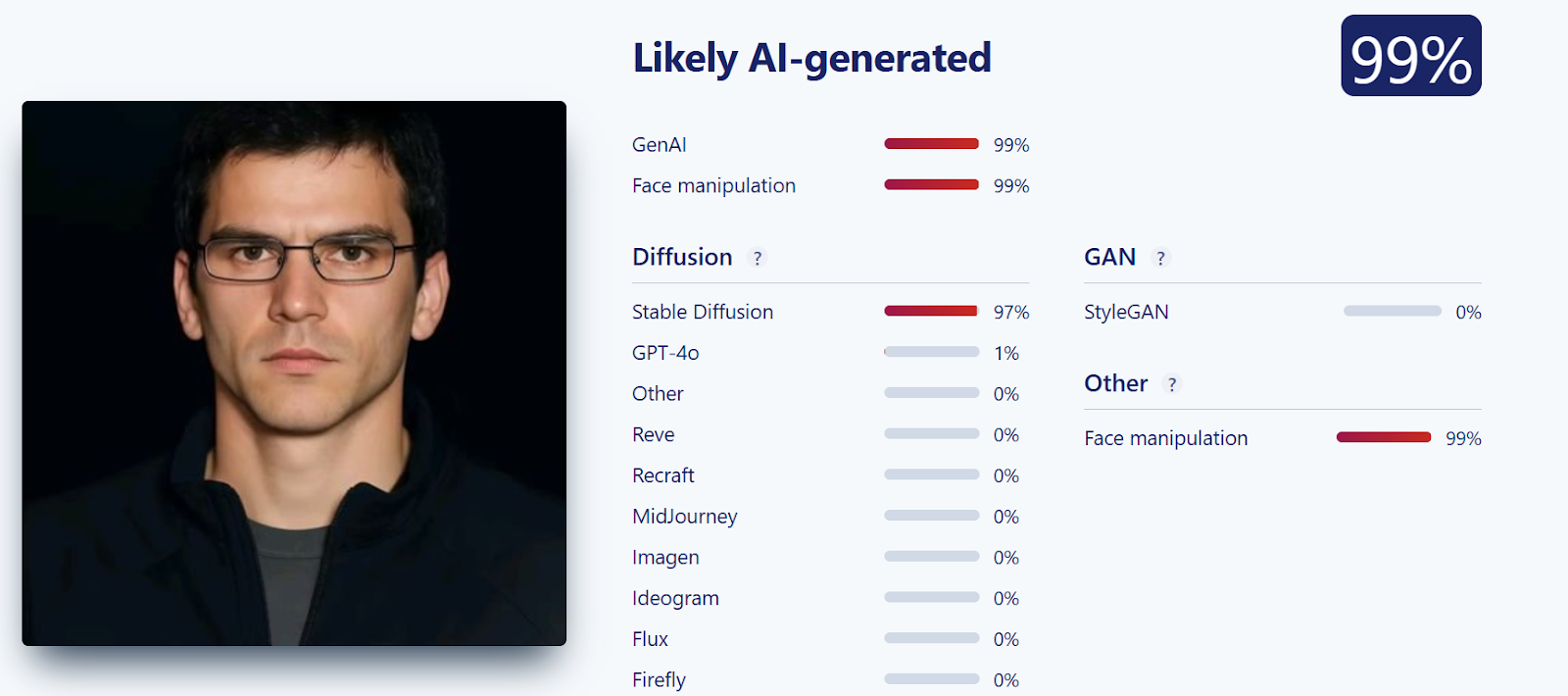
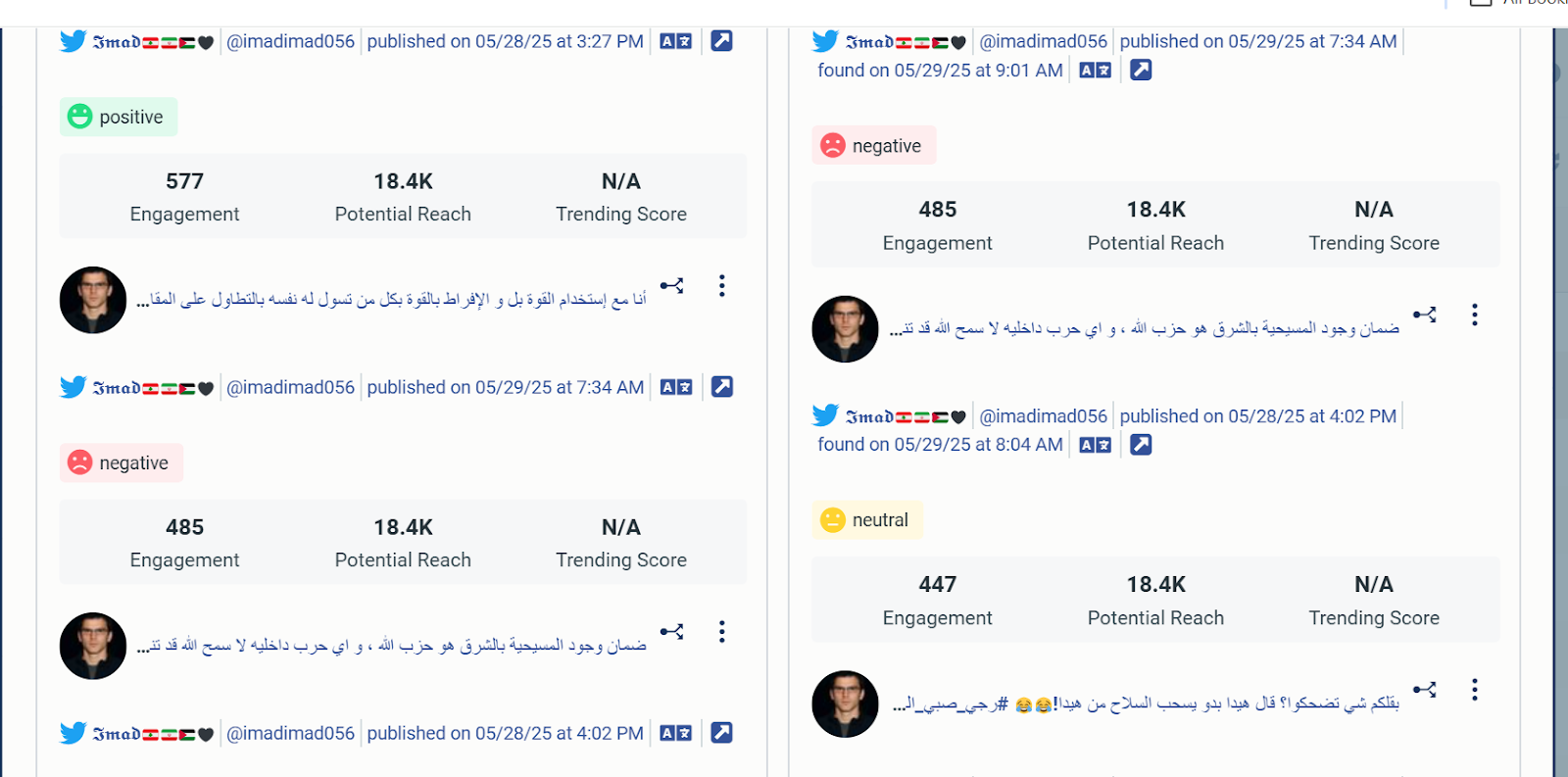
The second most active account was @wemamk2020, a pro–Hezbollah account that features multiple images of Hassan Nasrallah. Its bio reads: “The hand of God extended to us with weapons.” This account generated 909 interactions on its posts using the hashtag #رجي_صبي_السفارة (Raji, Embassy’s Boy”).
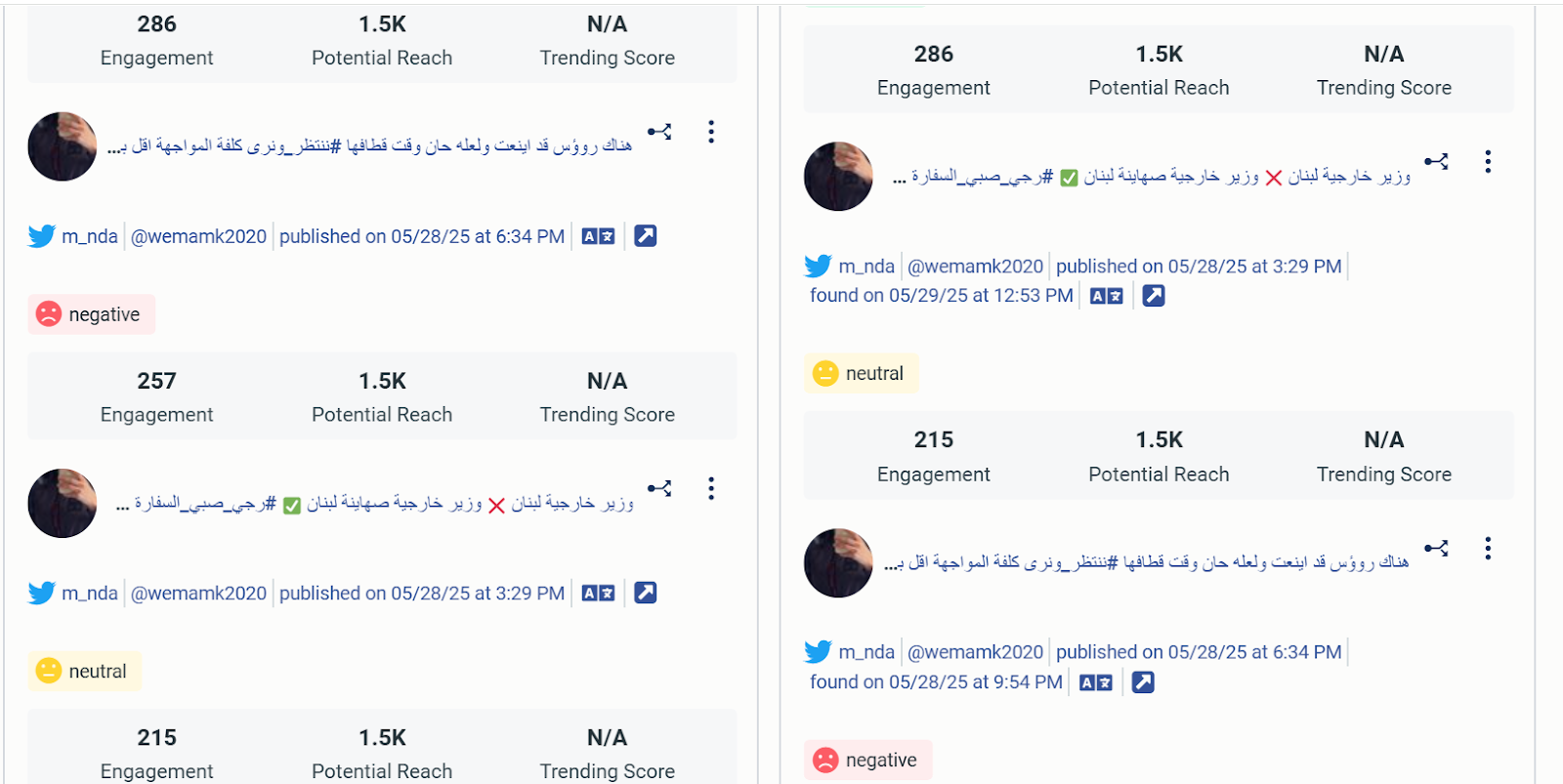
Accusations of Treason, Espionage, and Threats
Notably, the hashtag "#رجي_وزير_الميليشيا" (Raji, Minister of the Militia), which Hezbollah supporters had previously launched after the Lebanese foreign minister summoned the Iranian ambassador, resurfaced again as part of the current campaign, as shown in the image below.
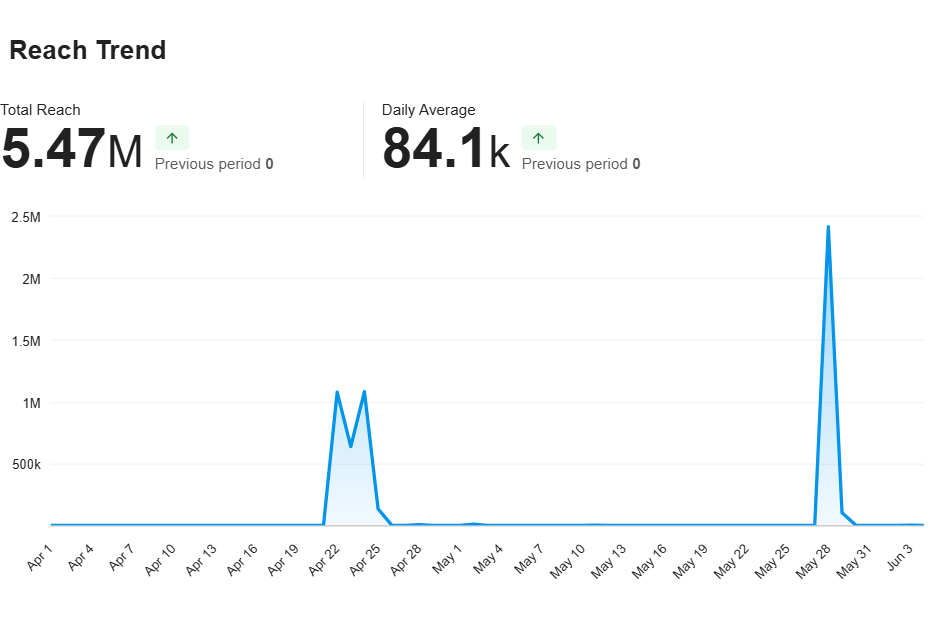
Most of the accounts that participated in posting under the hashtag "#رجي_وزير_الميليشيا" (Raji, Minister of the Militia) were also active on the hashtag "#رجي_صبي_السفارة" (Raji, Embassy's Boy). Among them was Sohail Diab, a journalist with Al Manar TV, in addition to many other accounts. The most active included:
ja3farr_، @abbas_raya19285
@ja3farr_, @abbas_raya19285,@amenahaydar0, @khomeinia182053,@r00nwjvx96xoqzc,@selmouslem,@assad_wolverine.
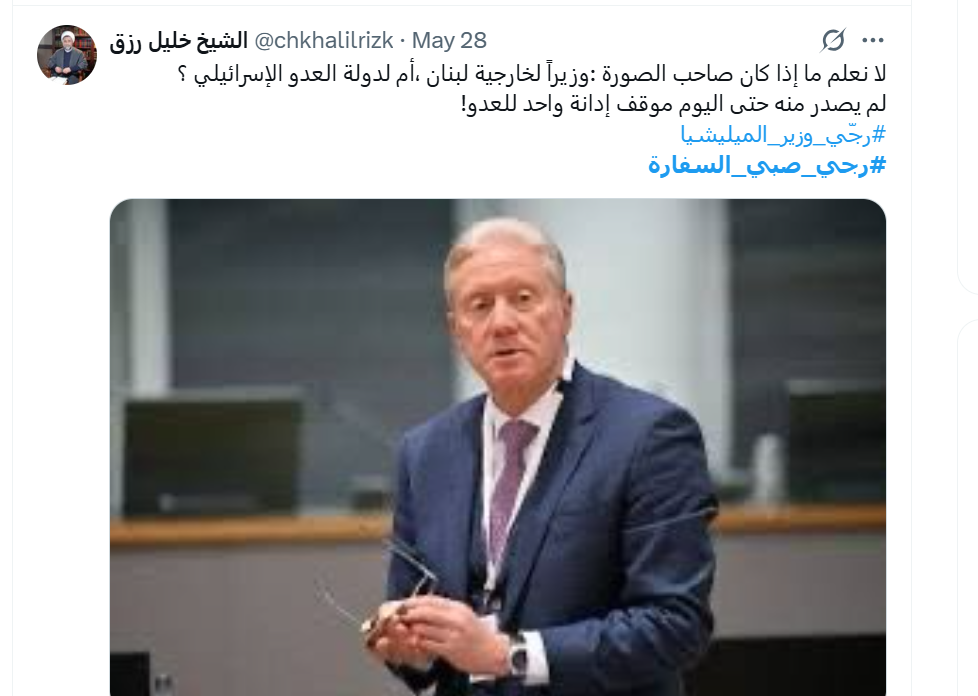
Journalist Mohammad Kazan also hinted at the possibility of civil war, claiming that the minister’s statements could lead to its outbreak. He went as far as describing him as "the foreign minister of the Lahad Army," directly accusing him of collaborating with Israel — all in response to the minister’s call for the disarmament of Hezbollah.
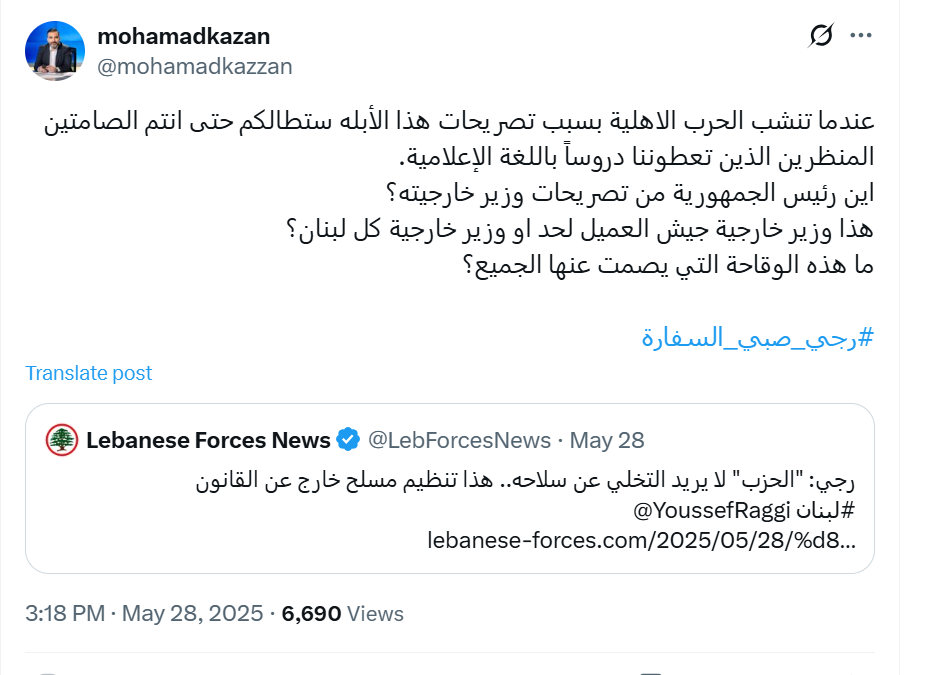
Animosity From Day One
Minister Raji has faced several smear campaigns since assuming office, including one in March, when he surprised Foreign Ministry staff with an unannounced visit during which he sharply reprimanded them over bribery and administrative negligence. The incident triggered a wave of criticism—not only from Hezbollah but also from other factions who dismissed the minister’s actions as performative.
Tensions escalated further when Raji summoned Iran’s ambassador to Lebanon, Mojtaba Amani, after the latter expressed opposition to Hezbollah’s disarmament.
This move sparked a fierce backlash from Hezbollah and its supporters, who responded by launching the hashtag #رجي_وزير_الميليشيا (Raji Minister of the Militia). Notably, this same hashtag has resurfaced in the current wave of attacks on the minister.
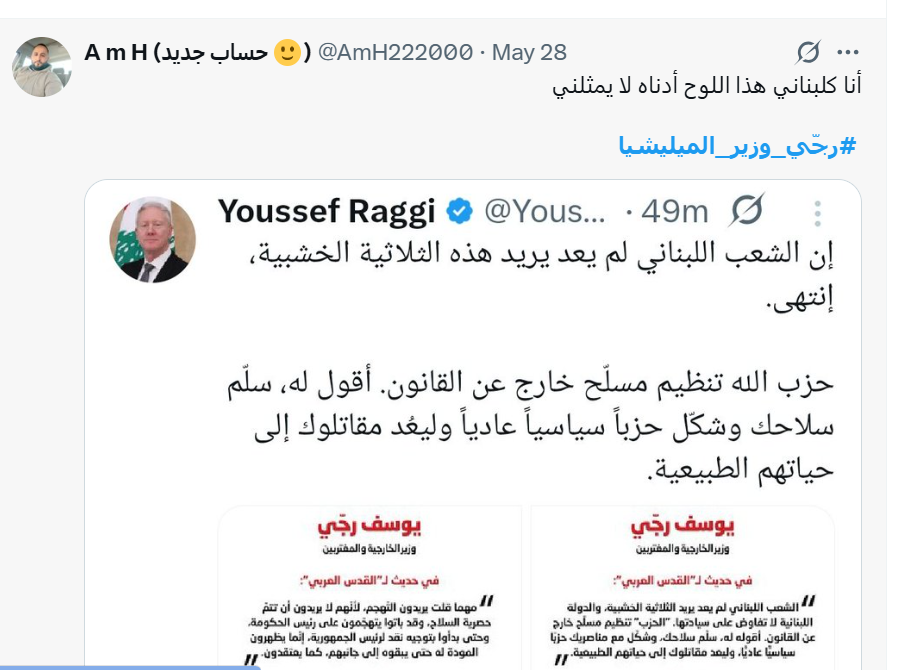
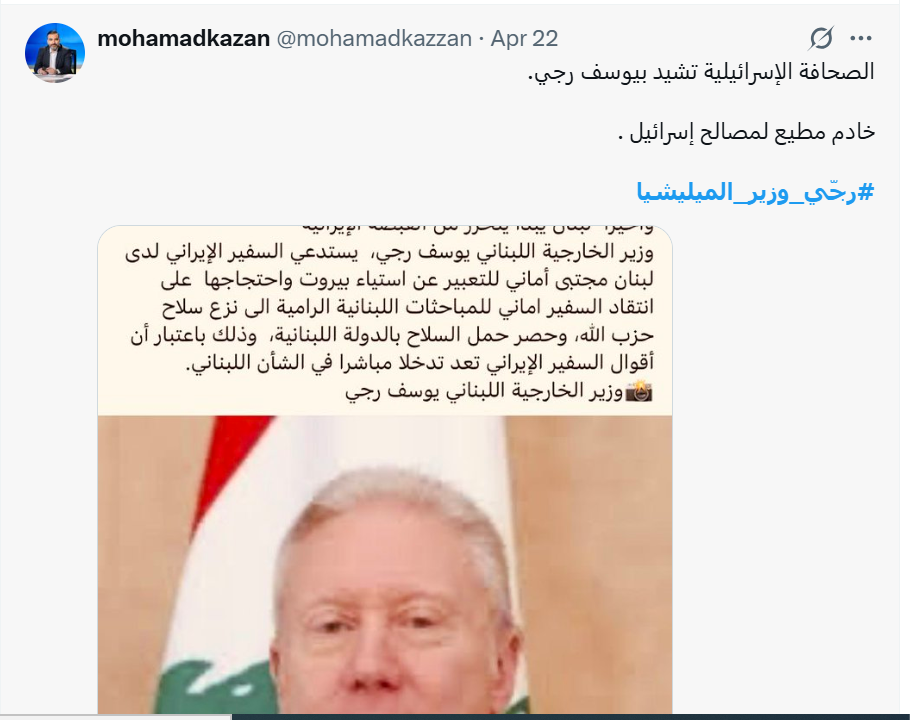
Prepared by Charbel Al Khoury
